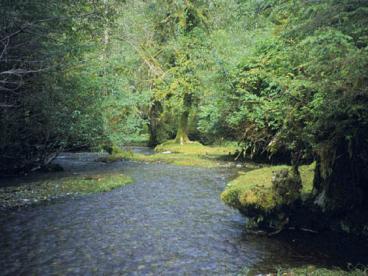INTRODUCTION TO NATURAL RESOURCES - PowerPoint PPT Presentation
1 / 20
Title:
INTRODUCTION TO NATURAL RESOURCES
Description:
NATURAL RESOURCES are resources found in nature. People cannot make more natural resources, but ... WATER is a tasteless and colorless liquid natural resource. ... – PowerPoint PPT presentation
Number of Views:61526
Avg rating:4.5/5.0
Title: INTRODUCTION TO NATURAL RESOURCES
1
(No Transcript)
2
INTRODUCTION TO NATURAL RESOURCES
- Introduction to Environmental and Agricultural
Science
3
Our Natural Resources
- NATURAL RESOURCES are resources found in nature.
- People cannot make more natural resources, but
many can be renewed. - Natural Resources essential for living
- Oxygen
- Water
4
Kinds of Natural Resources
- Natural Resources can be classified into Eight
Groups - Wildlife
- Air
- Wind
- Soil
- Water
- Minerals
- Fossil Fuels
- Sunlight
5
Wildlife
- WILDLIFE is a plant, animal, and any other thing
that lives in the wild. - It has NOT been domesticated.
- Includes all species that exist in nature,
including fungi, wild flowers, trees, insects,
fish, snakes, etc. - DOMESTICATION is bringing plants and animals
under the control of humans. - Domesticated Animals Cattle, Horses, Pigs,
Chickens, Sheep, etc. - Domesticated Plants Rice, Corn, Potatoes,
Cotton, Tomatoes, Grapes, etc.
6
Air
- AIR is the mixture of gases that surrounds the
earth. - Important Natural Resource
- All living things must have air to survive.
- Oxygen is the most important component of the
air. - Polluted air contains substances that may be
harmful to people and other resources..
7
Wind
- WIND is large-scale air movement across the
surface of the earth. - Weather fronts and surface features influence
wind. - Wind power is harnessing wind movement.
- Windmills and Turbines collect the power and use
it to pump water, generate electricity, etc. - Problems Wind direction and speed varies
8
Soil
- SOIL is the outer layer of the earths surface
that supports plant life. - Naturally occurring resource
- All living things rely on soil in one way or
another. - Basis for all living things
- Plants need soil to grow
- Animals eat plants
- Remains decay and become soil again
- Damaged and lost by erosion
9
Water
- WATER is a tasteless and colorless liquid natural
resource. - All living things must have water to survive.
- Only natural resource found in 3 forms
- Solid (ice)
- Liquid (water)
- Gas (vapor)
- Amount of water on the earth is constant, however
its form and condition changes in the water
cycle. - Flowing water can be used as a power source.
10
Minerals
- MINERAL is a natural inorganic substance on or in
the earth. - INORGANIC SUBSTANCE does not have the structure
of living things, does not contain carbon. - Examples
- Iron
- Precious Metals (Copper, Gold, Silver, Nickel)
- Granite, Sand, Gravel
11
Fossil Fuels
- FOSSIL FUELS are materials used to provide
energy. - Created by the decomposition of plants and
animals - Three main groups
- Petroleum (gas, oil, plastics)
- Natural Gas
- Coal
- Problem Major source of pollution
12
Sunlight
- SUNLIGHT is the light and warmth of the sun.
- Light produces solar energy.
- Energy is used by plants in photosynthesis.
- Life on earth depends on sunlight.
13
Renewability
- RENEWABILITY is whether or not a resource can be
restored after it has been used. - Basis for classifying natural resources
- Renewable
- Nonrenewable
14
Renewable Resources
- RENEWABLE NATURAL RESOURCES can be replaced when
used. - Resource may renew itself and be used again, but
renewing may take a long time - Examples
- Air
- Soil
- Wildlife
- Plants
- Water
15
Nonrenewable Resources
- NONREWABLE NATURAL RESOURCES can not be replaced
when used. - With careful management, some can be reused.
- Examples
- Minerals (Gold, Silver)
- Fossil Fuels (Oil and Coal)
16
Exhaustibility
- EXHAUSTIBILITY is whether or not the supply of a
resource is replenished as it is used. - Some resources can be replenished others cannot
be replenished.
17
Inexhaustible Resources
- INEXHAUSTIBLE NATURAL RESOURCES are resources
that are continually being replenished. - Examples
- Sunlight
- Air Wind
- Water
18
Exhaustible Resources
- EXHAUSTIBLE NATURAL RESOURCES are resources that
are available in limited quantity that can be
used up. - Examples
- Minerals
- Fossil Fuels
- Soil (replaced so slowly)
19
Conservation
- CONSERVATION is using resources wisely.
- Resources are not abused, wasted nor destroyed.
- Wise is using a resource in ways that do not
diminish its value and assure that supplies will
be available for future generations. - SUSTAINABLE RESOURCE USE is using resources so
they last a long time.
20
Preservation
- PRESERVATION is maintaining a natural resource
without using it up. - Resource is protected.
- Set aside for future use.
- People can view the resource, but cannot harvest,
mine or otherwise take it. - Examples
- Wildlife Preserves and Refuges
- Old Growth Forests protected from cutting































